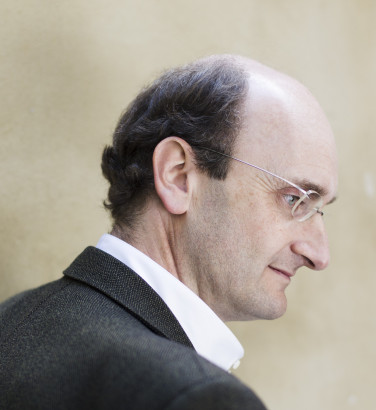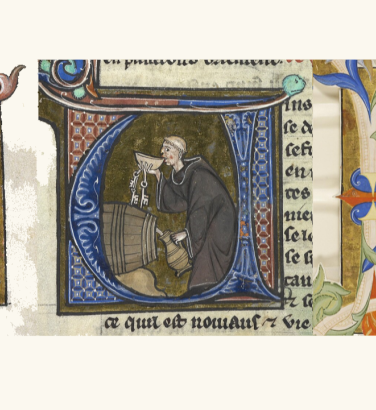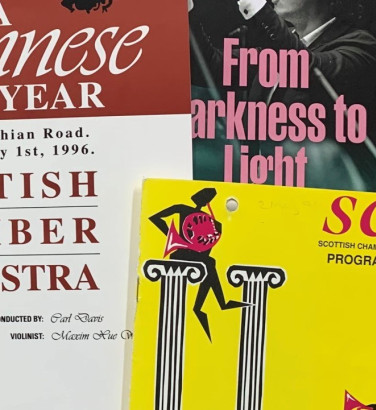
The lure of the exotic: northern Africa in classical music
2 Jun 2025
News Story
Left to right: Camille Saint-Saëns, André Caplet and Nikolai Rimsky-Korsakov
As humans, we are by our very nature fascinated by far-flung lands, our attention drawn to the mere idea of cultures so unlike our own. In the arts, this has resulted in a good deal of cross-cultural pollination, from the fashion for 'Turkish' percussion in Mozart and Haydn’s day to Gilbert and Sullivan’s The Mikado, inspired by the mid-Victorian love of all things Japanese. The latter heralded a long period during which the music of Asia gained a lasting foothold as an influence on western composers. The sound of the Javanese gamelan alone enthralled Debussy and Poulenc at major exhibitions held in Paris in 1889 and 1931 respectively, and would later be a major influence on Britten, perhaps most obviously in his 1957 ballet The Prince of the Pagodas, written a year after visiting Indonesia.
Slightly closer to home, northern Africa has also captured the imagination of countless composers. Musically, it covers everywhere from Morocco all the way east into Iran: a vast geographical area represented by a kind of musical shorthand which, in truth, cannot do justice to the many and varied peoples it encompasses.
It’s worth noting that the Muslim conquest of southern Spain in 711 resulted in many aspects of this culture spilling over into the Iberian peninsula. Modern Andalucia remains marked by Moorish influences – to take but one example, the conversion of Córdoba’s Great Mosque into a cathedral in 1236 resulted in an extraordinary architectural hybrid – and the traditional music of Spain is no different. The heated atmosphere of Bizet’s Carmen and Ravel’s many Spanish-flavoured works owe a good deal to the wider Arab world.
These composers' output is so popular that it has overshadowed Saint-Saëns’ own music inspired by north Africa (then very much under French control). This includes an Algerian Suite with what we might now term an unfortunate ‘Marche française’ – in which, according to the composer’s own notes, a regiment’s ‘war-like accents contrast with the strange rhythms and languorous melodies of the Orient’ (imperialist sentiments probably inevitable for the period) – and his Piano Concerto No 5, which the SCO performs at the 2025 BBC Proms. The latter was quickly nicknamed the Egyptian (thanks to a quotation from a Nubian love song in the slow movement), despite Spanish and gamelan music also being a clear influence.
Saint-Saëns himself, however, appears to have considered Africa
(a fantasia for piano and orchestra) more significant, at least in terms of its personal resonance. It also quotes the music of both Algeria and Egypt, making a more conscious effort to emulate their style, even as Saint-Saëns incorporates them within the western idiom of a work for solo instrument and orchestra. He does this so successfully that it is, quite frankly, a pity that Africa is not better known today.
In being based on tales from The Arabian Nights, Rimsky-Korsakov’s Sheherazade understandably indulges in a more fanciful depiction of this world. The composer himself admitted that the music was intended to be ‘a kaleidoscope of fairy-tale images and designs of Oriental character’, but even without any great claim to authenticity, Rimsky-Korsakov’s score is highly evocative. His gift for vivid orchestration really comes to the fore here: there are tender, sinuous lines in the solo violin (which represents the title character), a thrilling dance made even more captivating by the addition of tambourine, leading directly into one of the most vivid storms at sea in the repertoire, complete with high waves crashing against the bow of a ship. A pastiche it may be, but so entertaining that its appeal is undeniable.
Moving ever further away from any sense of subtlety, we find the excesses of the Hollywood epic. Among the most beloved of (relatively) recent films set in northern Africa is 1999’s The Mummy, a remake of the Boris Karloff-starring film of the same name. Jerry Goldsmith’s score strikes an unusual note by the use of a bouzouki to give the music a more exotic flavour. This instrument is more associated with Greece (on the wrong side of the Mediterranean), but if anything, this strange decision only adds to the enjoyable hokum. As such, The Mummy's music is on a par with Alex North’s for 1963’s even more grandiose Cleopatra (with Elizabeth Taylor and Richard Burton), and definitely a step up from the 1932 original’s use of Tchaikovsky’s Swan Lake as a main theme.
Where, then, are we to find something more genuine? Try Caplet’s Suite Persane (Persian Suite) for wind dectet, written in 1900 (some 35 years before Persia would be officially renamed Iran) but in a style which seems to look much further back into the country’s history. Right from its opening melody, it’s clear we’ve left the European tradition of wind serenades far behind: ancient Persian songs form the backbone of the entire work, and the harmonies which support them reflect this. We may struggle to pinpoint its precise origin, but Caplet’s use of this music immediately feels more genuine than in Saint-Saëns’ Africa, and streets ahead of the more generic exotica of Hollywood films: at no point is its piquancy compromised for the sake of western audiences.
As for what exactly makes a piece of music evoke the Arab world – whether in very general terms or a specific part of it – this is nigh on impossible without resorting to technical terms. Let us instead turn to Colonel Brandon in Ang Lee’s 1995 film of Sense and Sensibility: “the air is full of spices” is a wonderfully evocative way of conjuring up somewhere mysterious with more than a hint of the intoxicating. True, the line refers to India rather than northern Africa, but as spoken by the inimitable Alan Rickman, it is impossibly alluring.
Related Stories
![]()
Andrew Manze: "I've always loved Viennese waltzes and polkas"
1 December 2025
Our Principal Guest Conductor is really looking forward to conducting our Viennese New Year concerts!![]()
The medieval carol
24 November 2025
For this year's Christmas article, we look back at some very early festive carols ...![]()
A history of the orchestral concert
17 November 2025
Is there such a thing as a standard concert format? Join us as we dive into the history of programming ...



